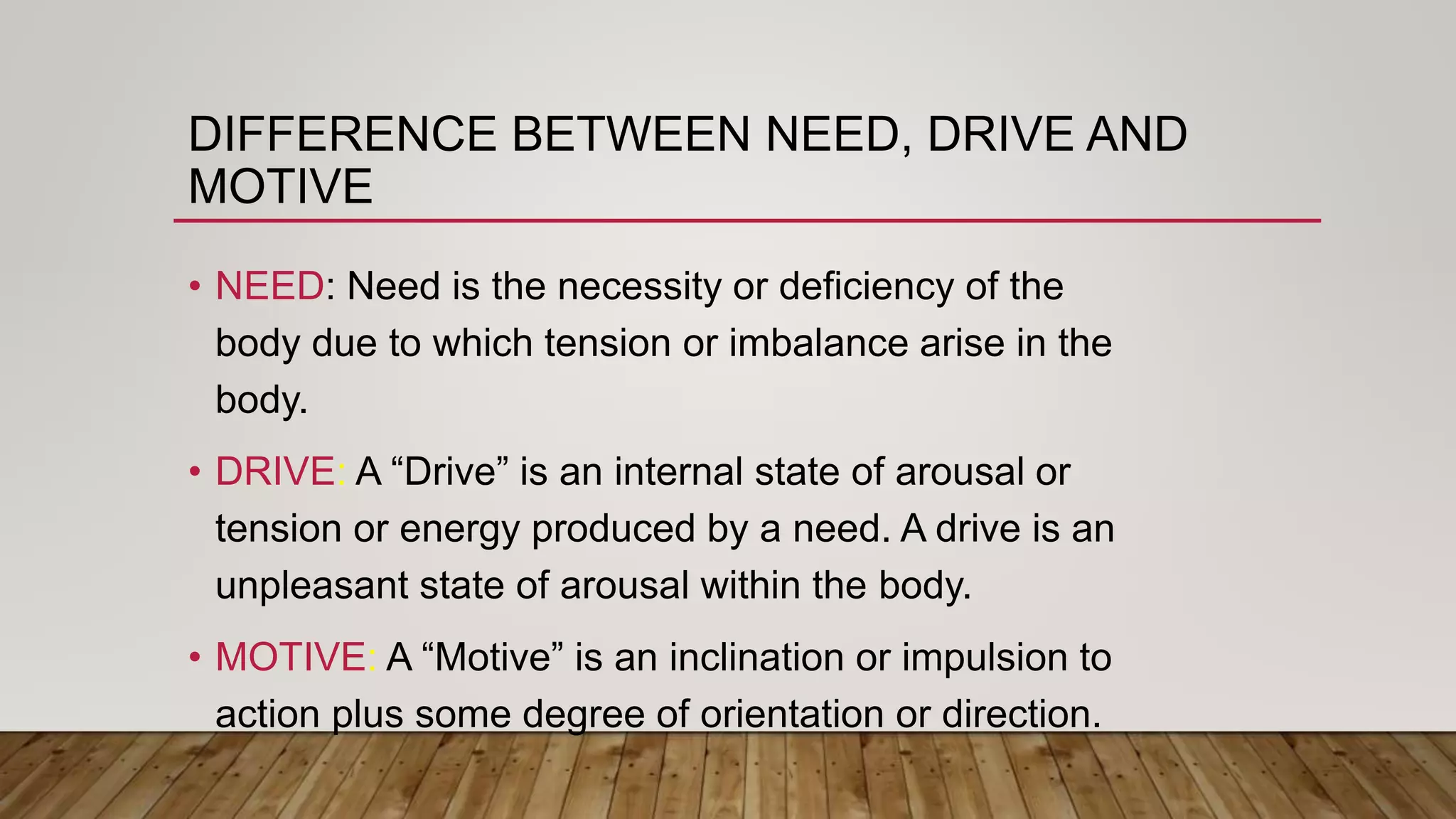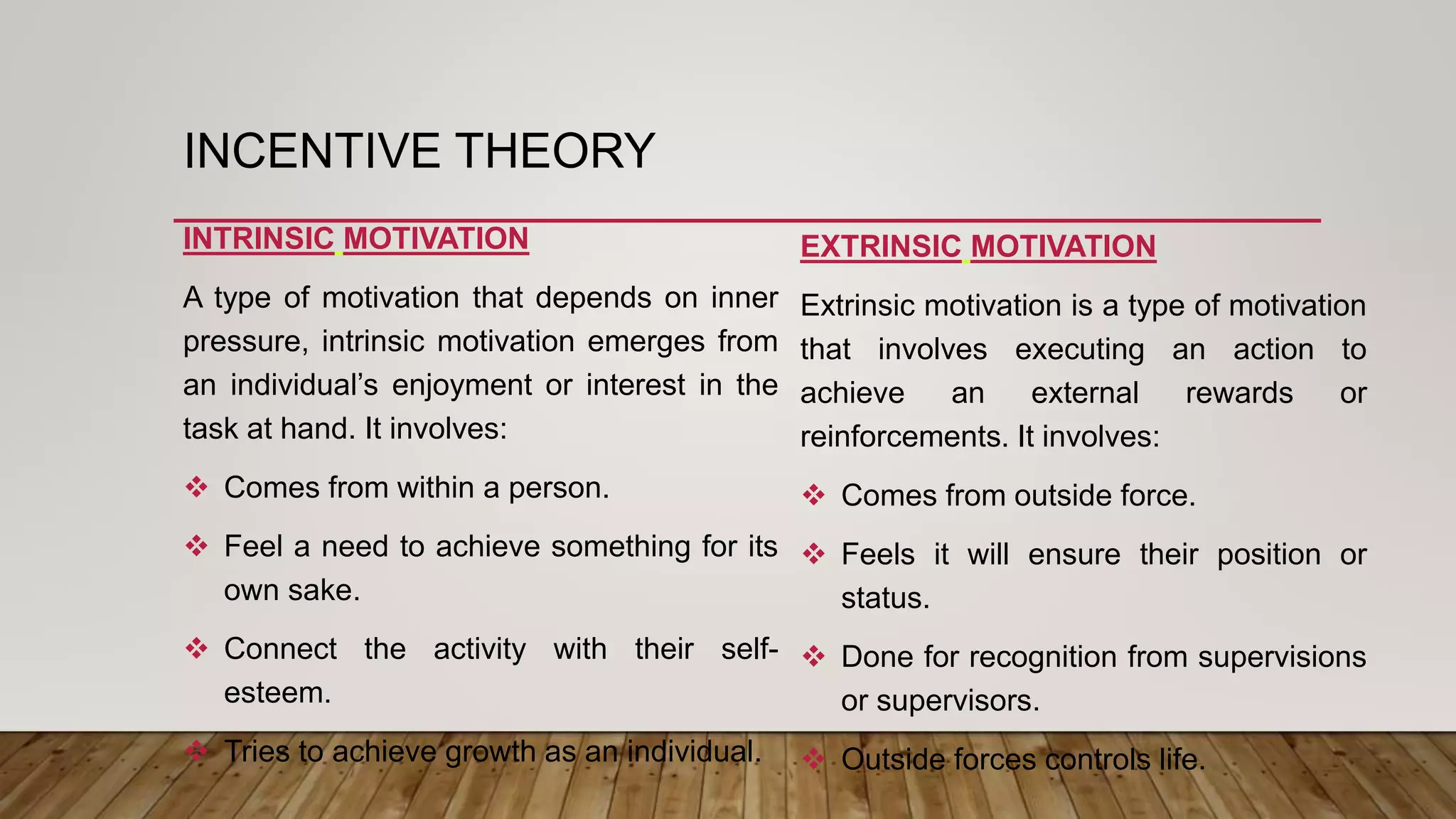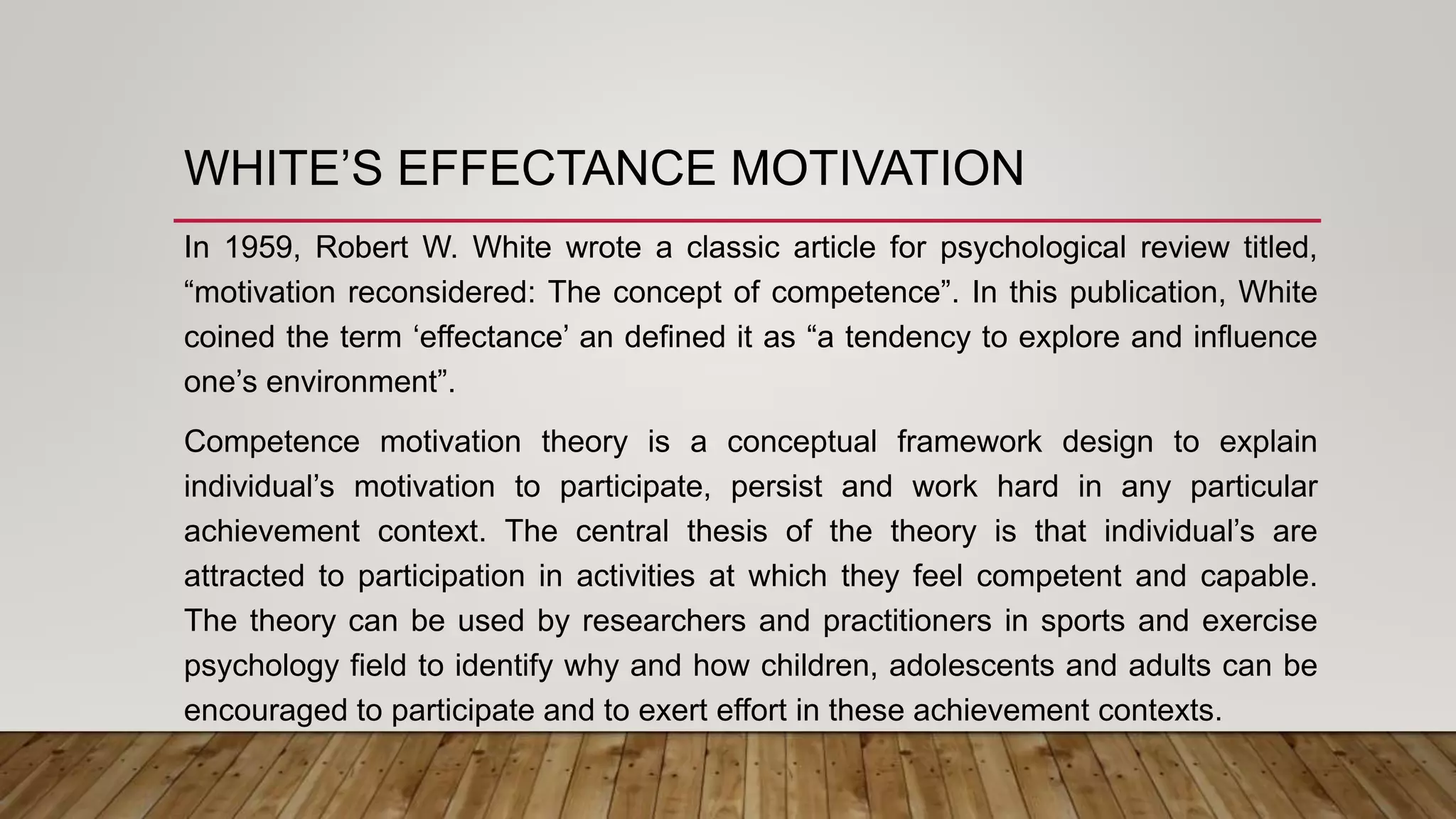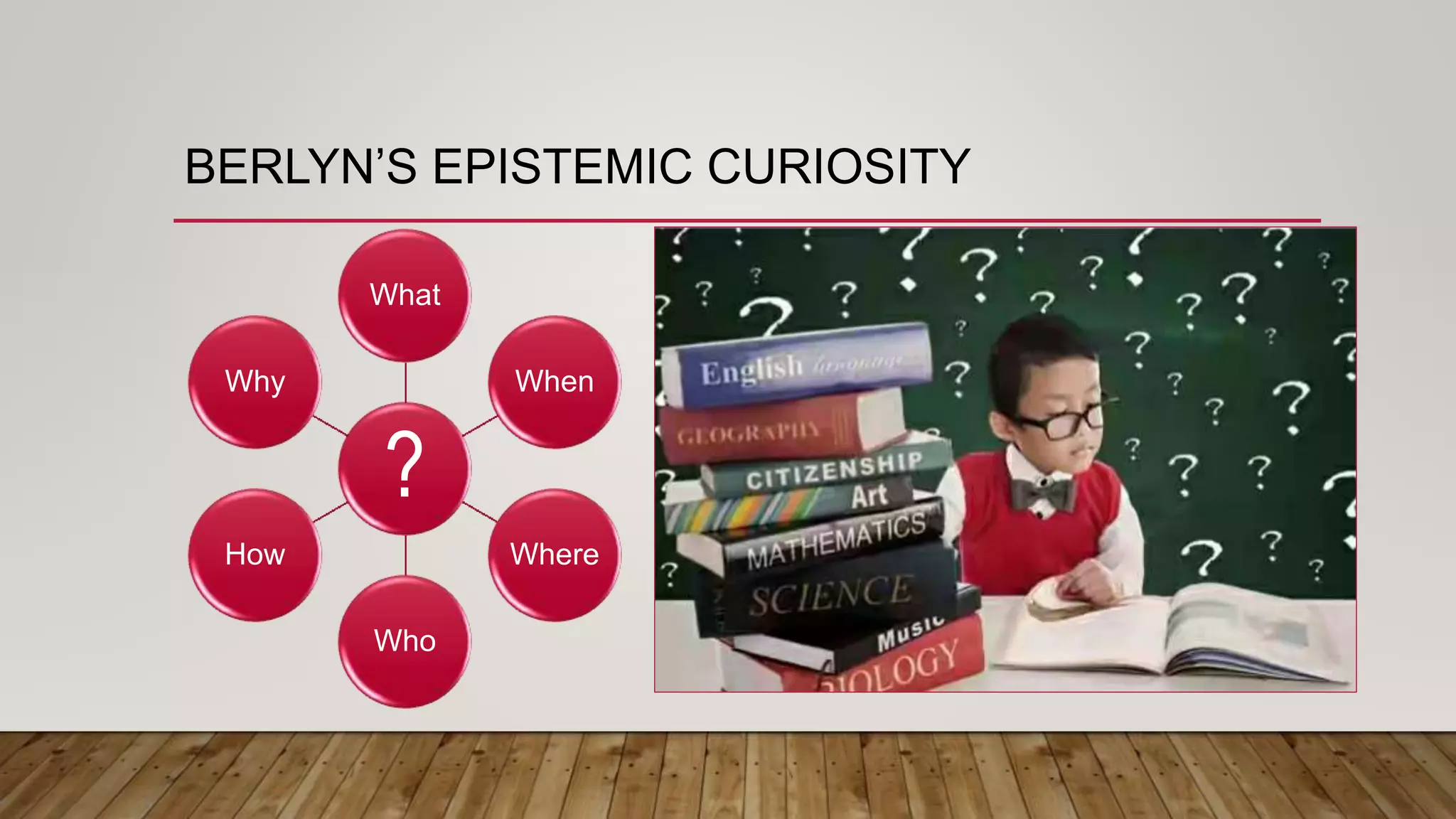This document discusses motivation in education. It defines motivation and differentiates between needs, drives, and motives. Motivation is described as a process involving energy, direction, and persistence towards a goal. Theories of motivation discussed include content theories like Maslow's hierarchy of needs and process theories like Vroom's expectancy theory. Intrinsic and extrinsic motivation are also defined. Educational implications of effectance motivation theory and epistemic curiosity theory are provided. In conclusion, motivation activates and directs behavior towards a goal and in education affects learning by increasing effort and energy. Motivation theories can help understand human motivation and enhance learning.



















